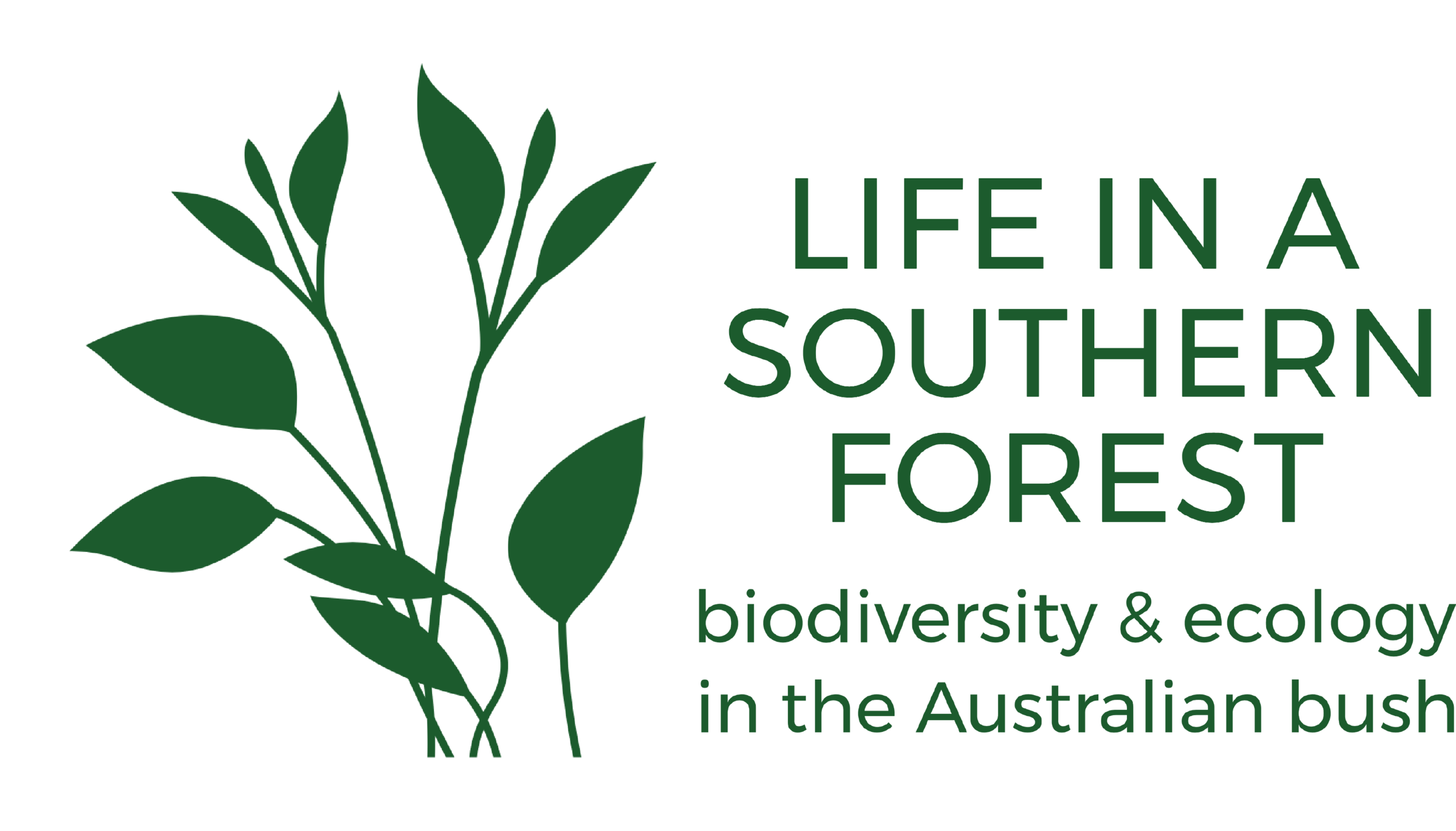
overall shape & size
Sphodrotes punctuosa females:
9.5 – 12mm
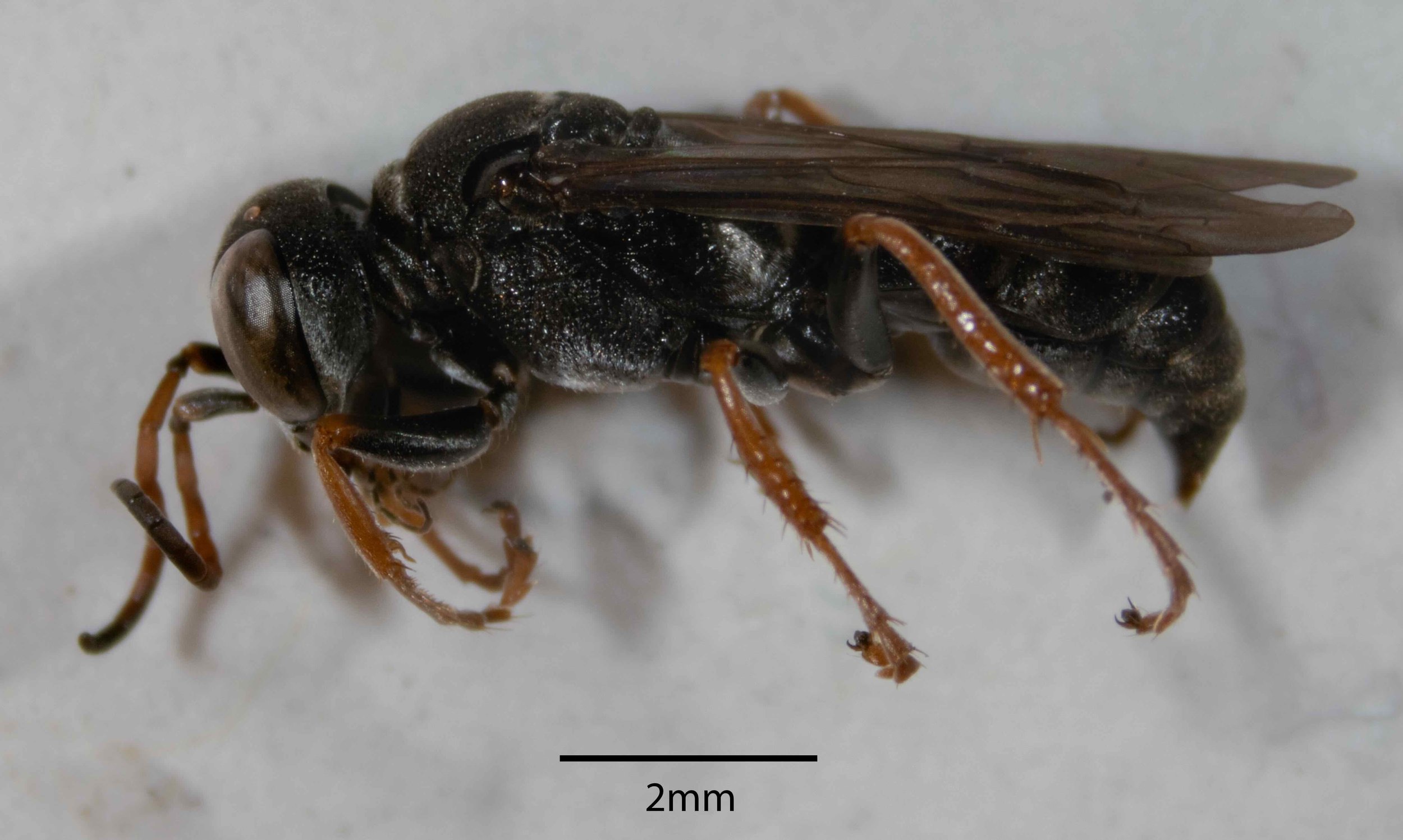
leg colour
Sphodrotes punctuosa females:
“Femora black with light ferrugineous apices. Tibiae and tarsi light ferrugineous.”

facial sculpture & pubescence
Sphodrotes punctuosa females:
“Facial sculpture double, consisting of deep punctures separated by shining, finely and densely punctate interstices less than their diameter. Lower face with silvery pubescence of varying density. Frontal line absent or very indistinct.“
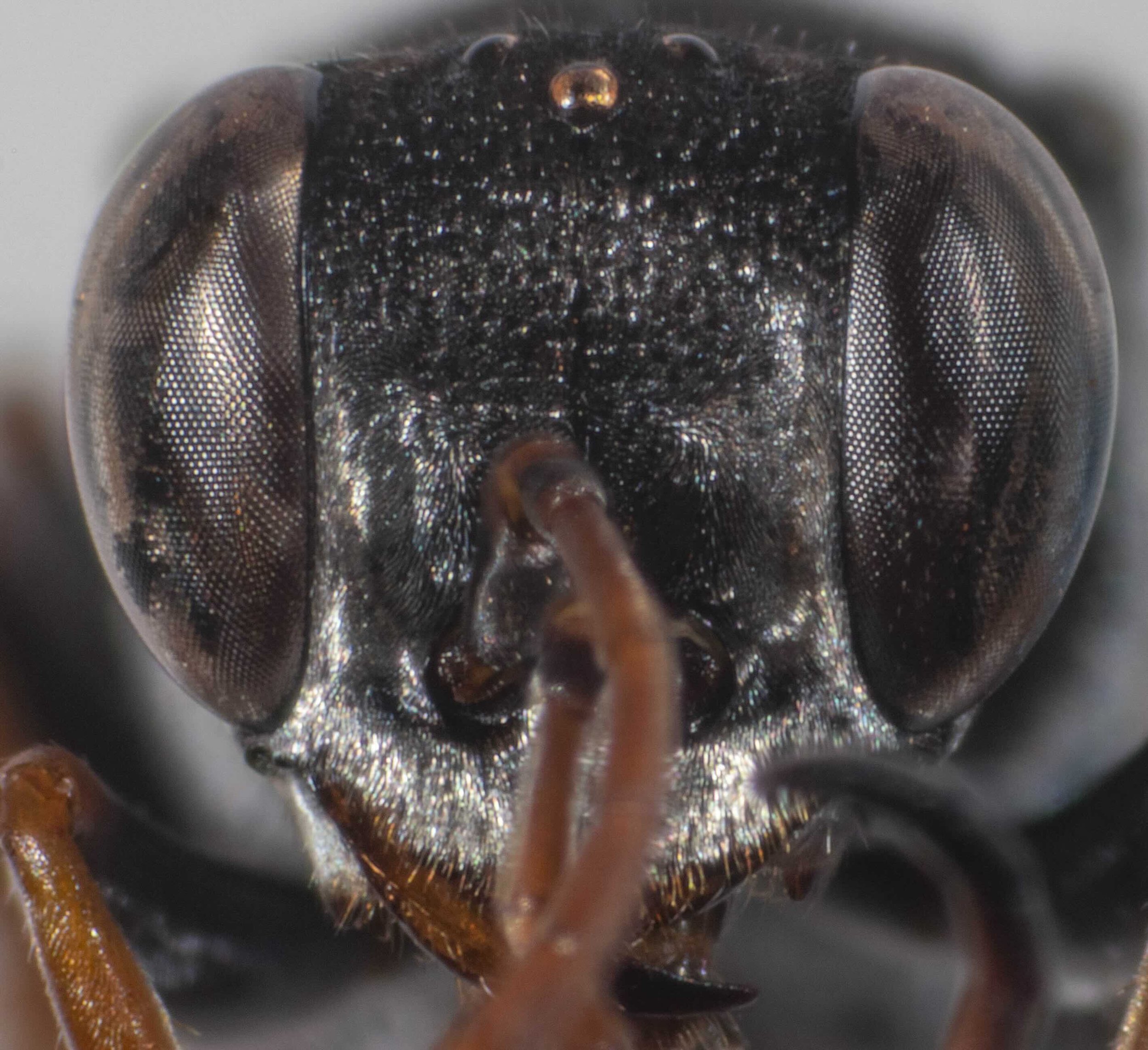
facial sculpture & pubescence
Sphodrotes punctuosa females:
“Facial sculpture double, consisting of deep punctures separated by shining, finely and densely punctate interstices less than their diameter. Lower face with silvery pubescence of varying density. Frontal line absent or very indistinct.“
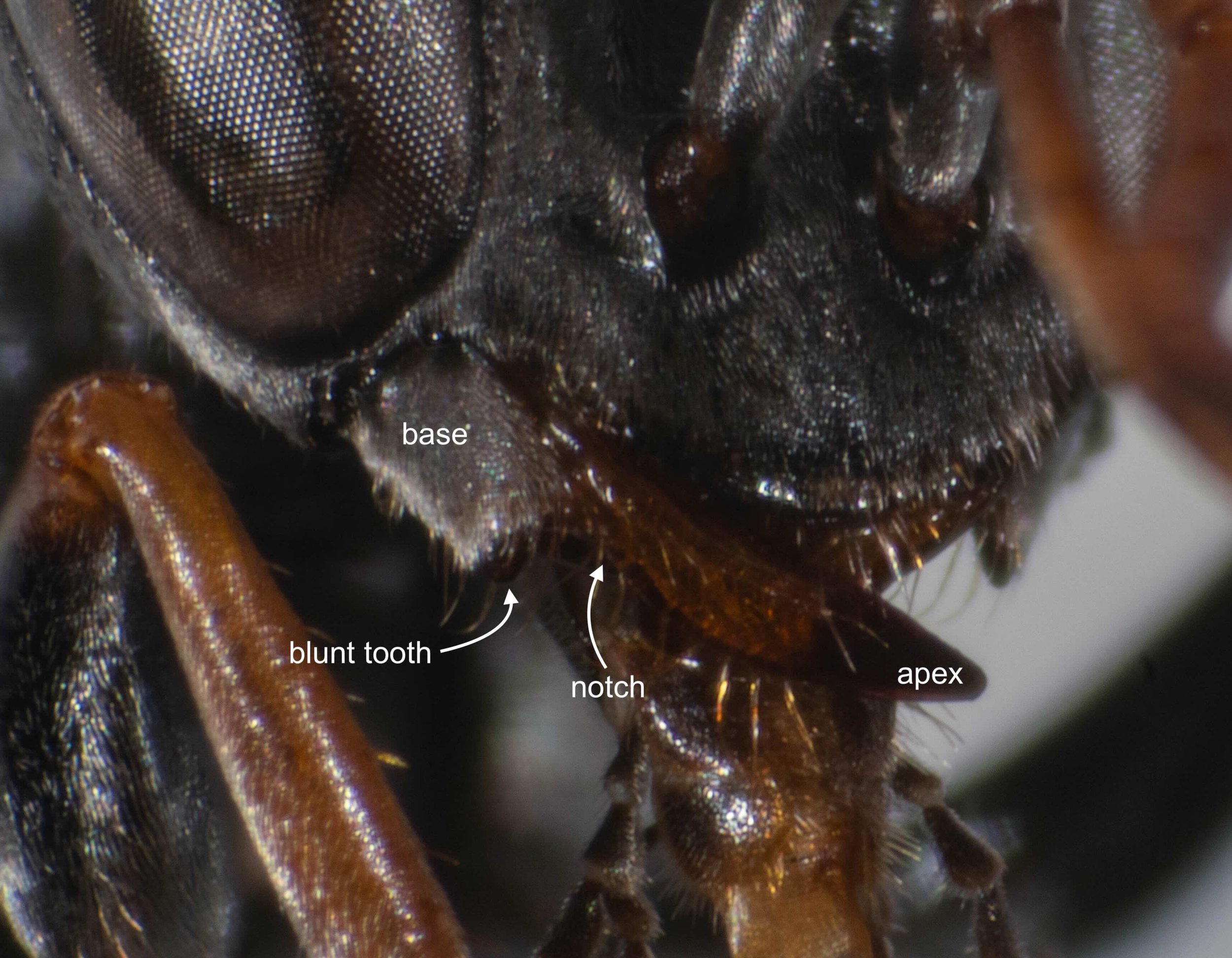
mandible colour & pubescence
Sphodrotes species:
“Mandibles with externoventral notch, proximally delimited by a blunt tooth.” (p. 87)
Sphodrotes punctuosa females:
“Mandibles densely pubescent proximally, median part ferrugineously amber, apex black to dark ferrugineous.”
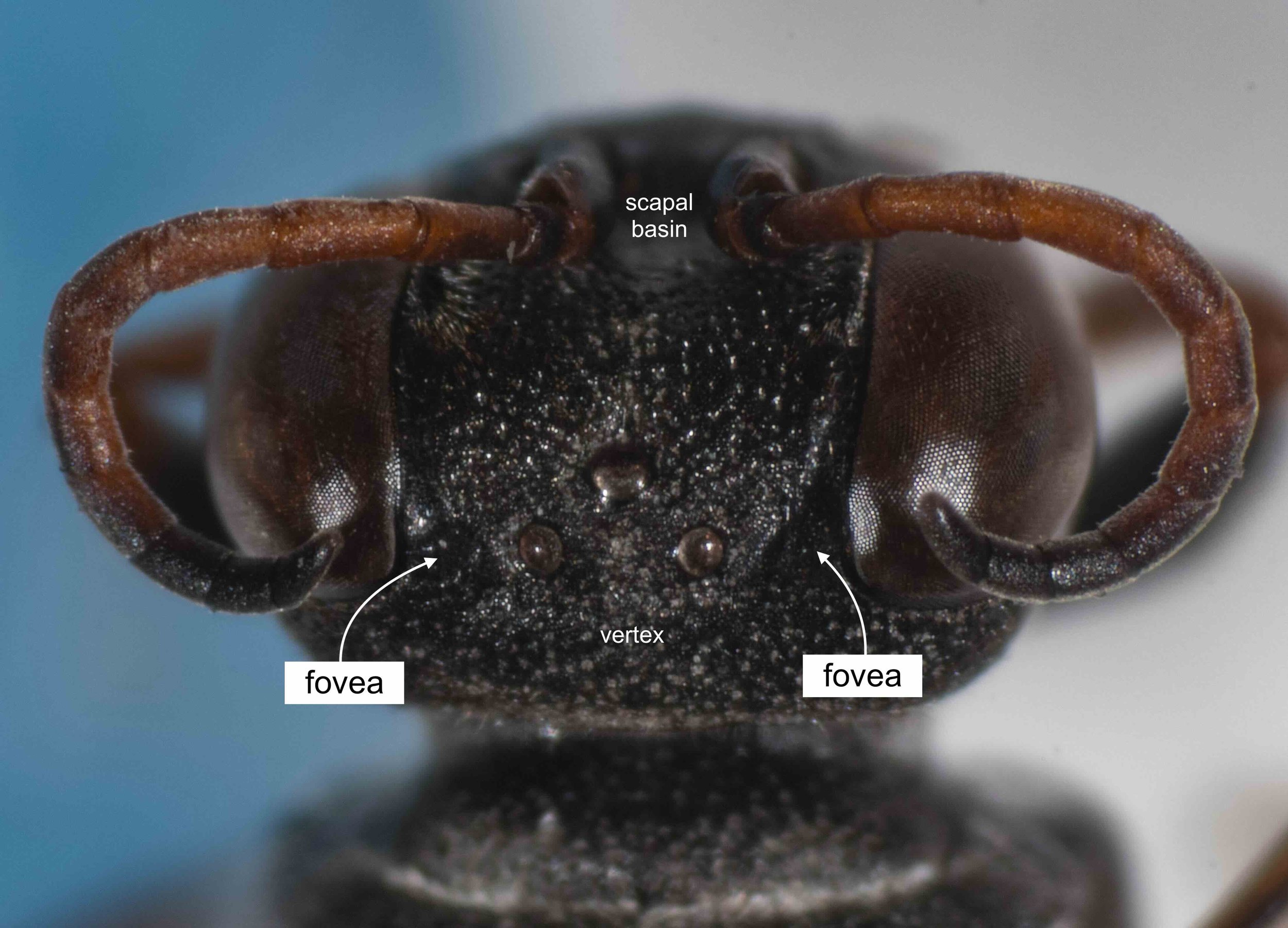
fovea; antennal colour
Sphodrotes punctuosa females:
“Facial foveae distinct, medially bordered by a longitudinal elevation.” “Antennal colour varying from almost quite dark brown or black to light yelowish ferrugineous.”
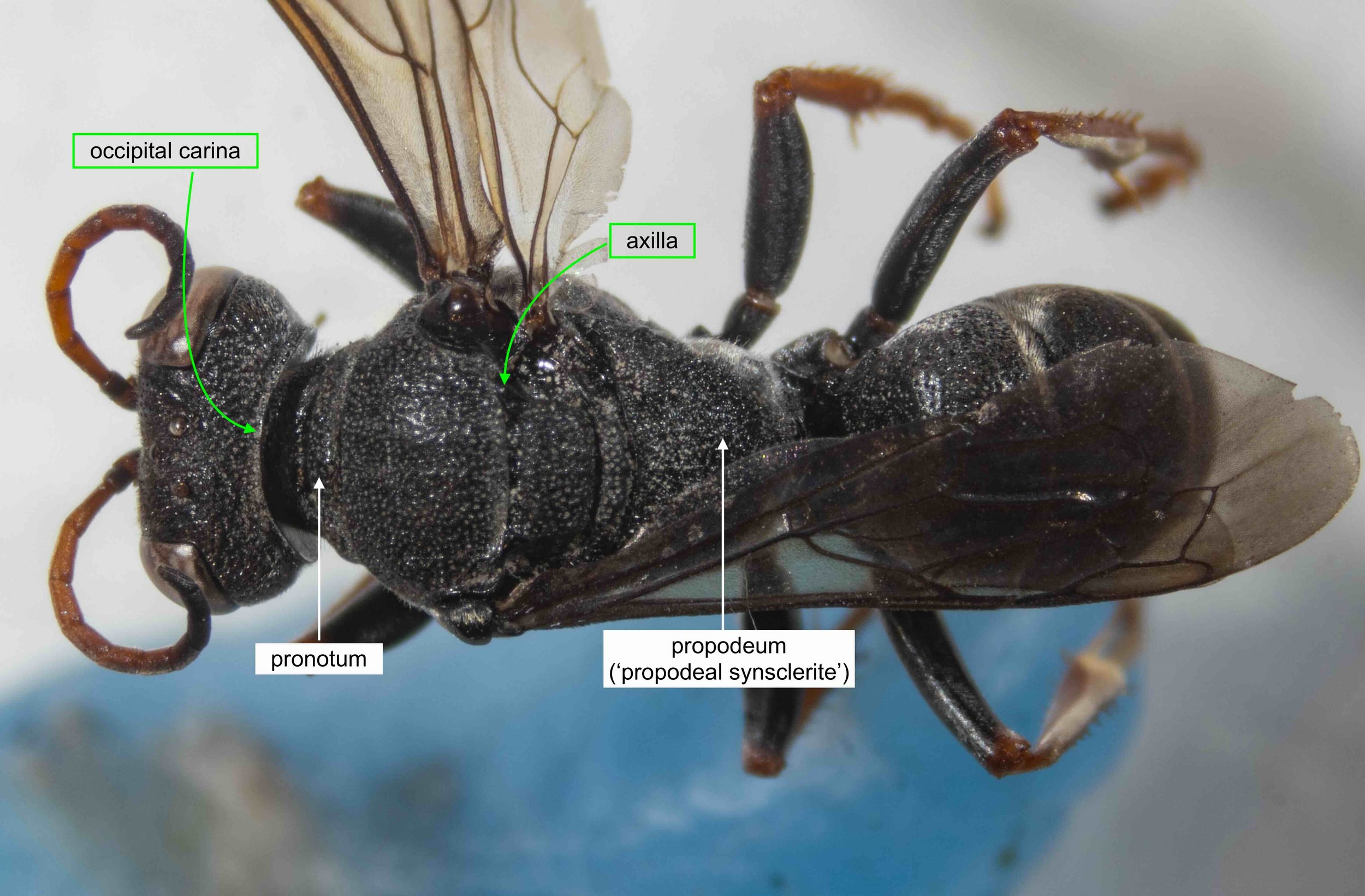
dorsal structures
Sphodrotes species:
“Pronotum short. Axillae shining smooth.”
“Propodeal synsclerite: Dorsal enclosure only indicated by a shallow, indistinctly pitted, groove.” (p.87)
Sphodrotes punctuosa females:
“Propodeum. Dorsal face with a weak, median carina (absent in some specimens), remaining surface strongly reticulate. Posterolateral areas with dense, silvery pubescence, teeth absent or only slightly indicated. Lateral faces coarsely striate medially. Posterior face with superficial, transverse striation.”
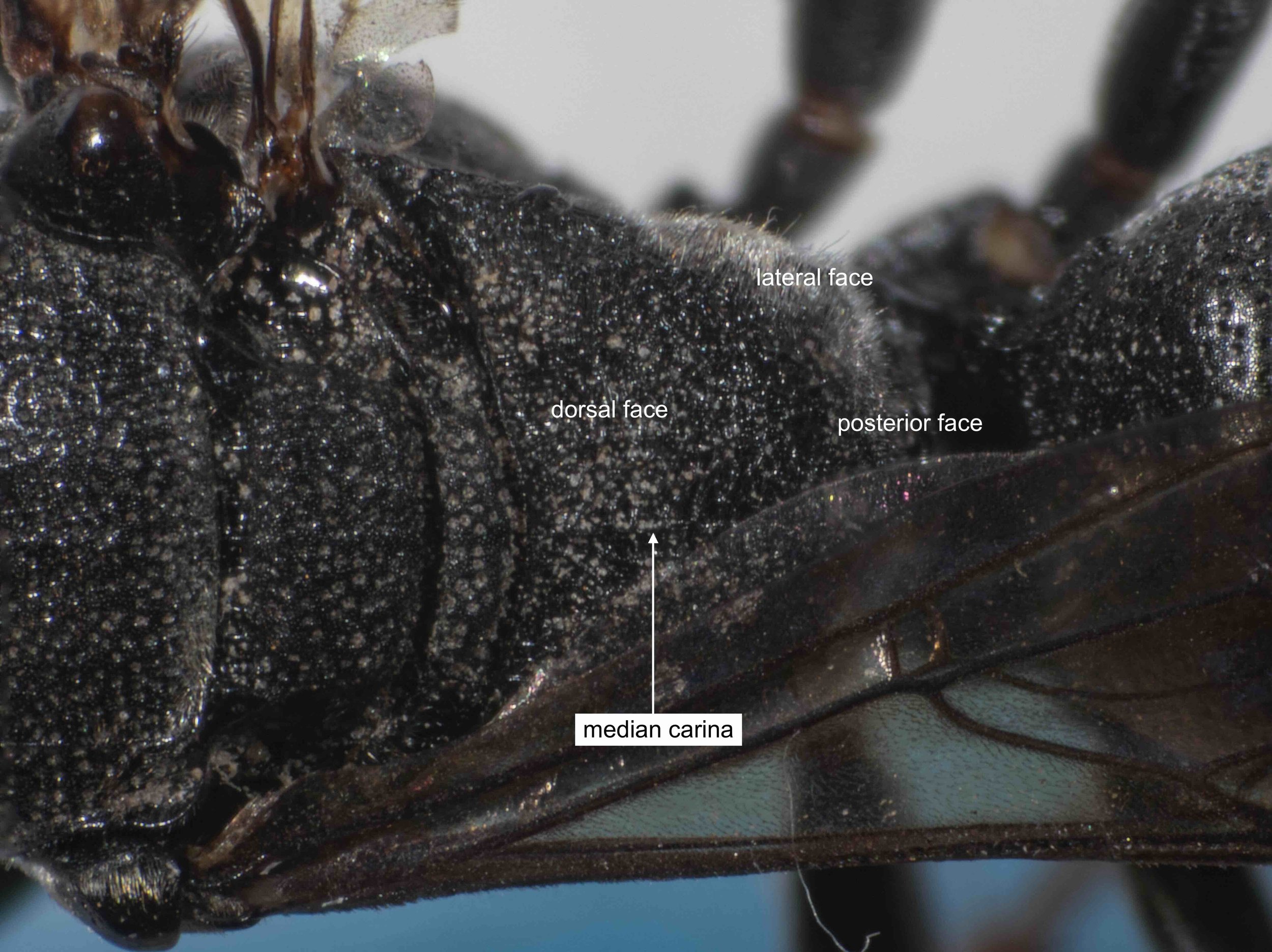
propodeum
Sphodrotes punctuosa females:
“Propodeum. Dorsal face with a weak, median carina (absent in some specimens), remaining surface strongly reticulate. Posterolateral areas with dense, silvery pubescence, teeth absent or only slightly indicated. Lateral faces coarsely striate medially. Posterior face with superficial, transverse striation.”
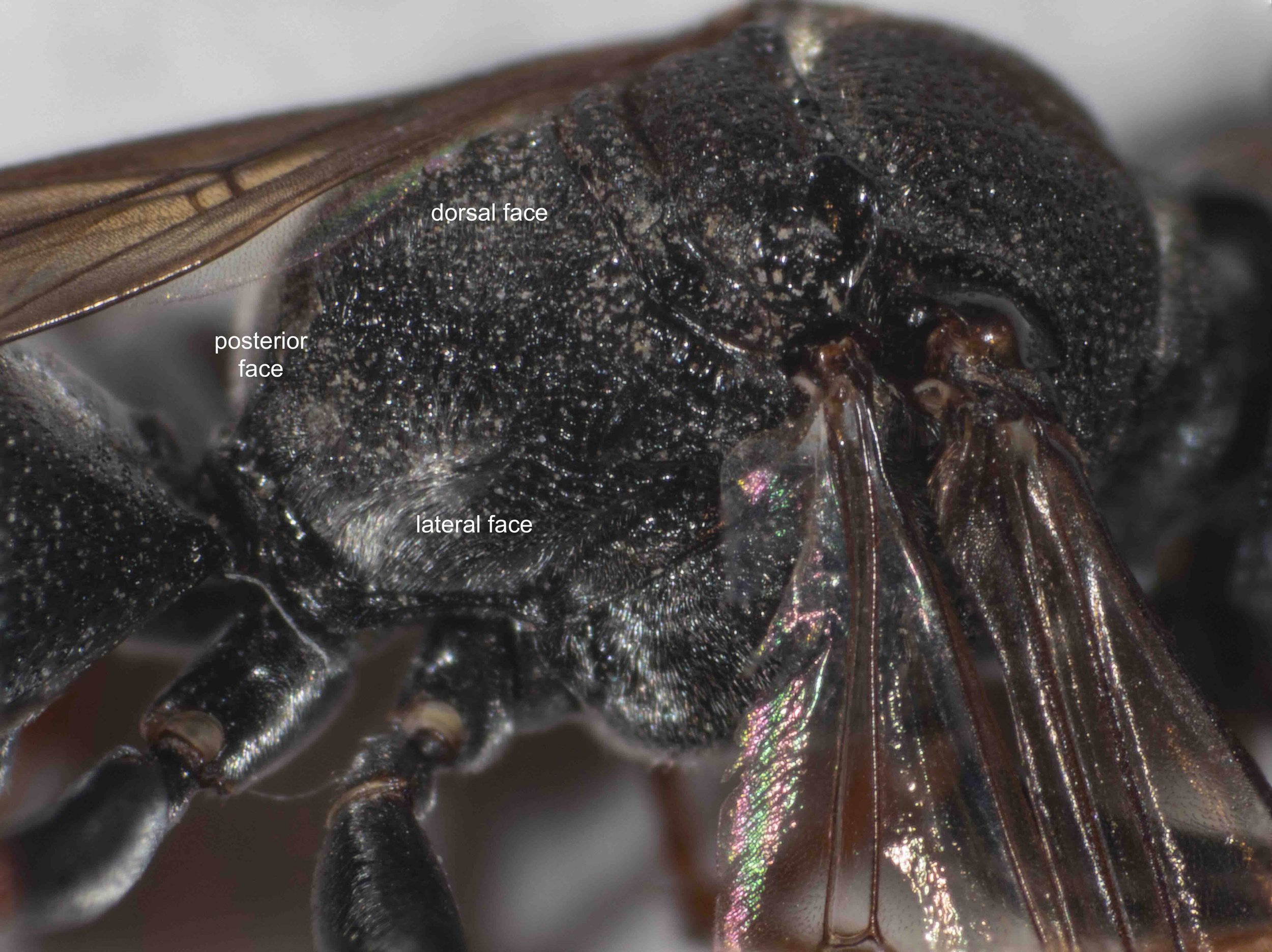
propodeum
Sphodrotes species:
“One or two posterolateral prominences usually present, less pronounced in males than in females.”
Sphodrotes punctuosa females:
“Posterolateral areas with dense, silvery pubescence, teeth absent or only slightly indicated. Lateral faces coarsely striate medially. Posterior face with superficial, transverse striation.”
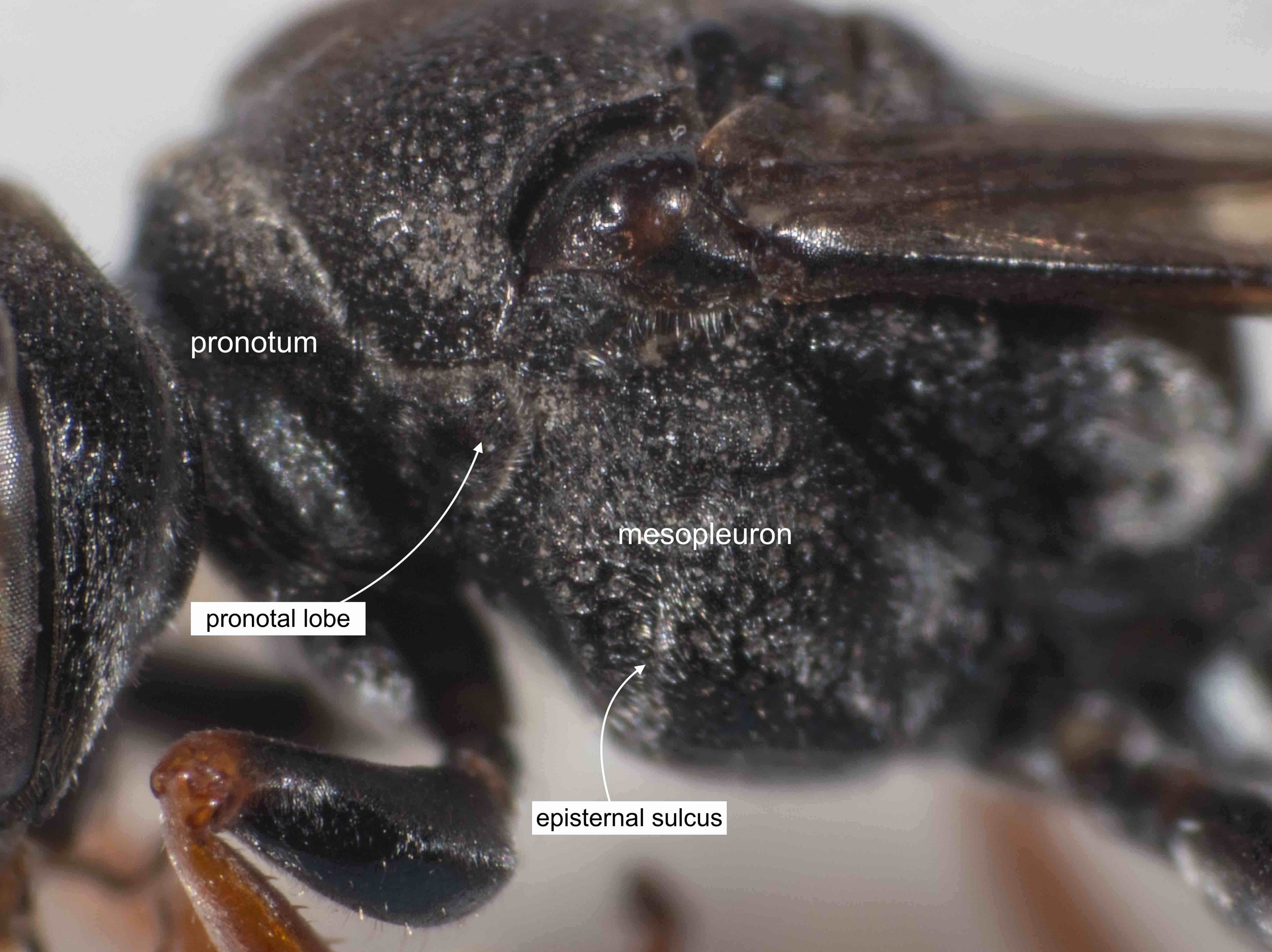
thorax black & densely punctate
Sphodrotes punctuosa females:
“Thorax, incl. pronotal lobes black, strongly and densely punctate, punctation on scutum not as strong as that of frons, interstices even, finely punctate.” “Anterodorsal mesopleuron very strongly sculptured, punctures pit-like. Episternal sulcus deep.” “Entire mesopleuron with thin greyish-white pubescence.”
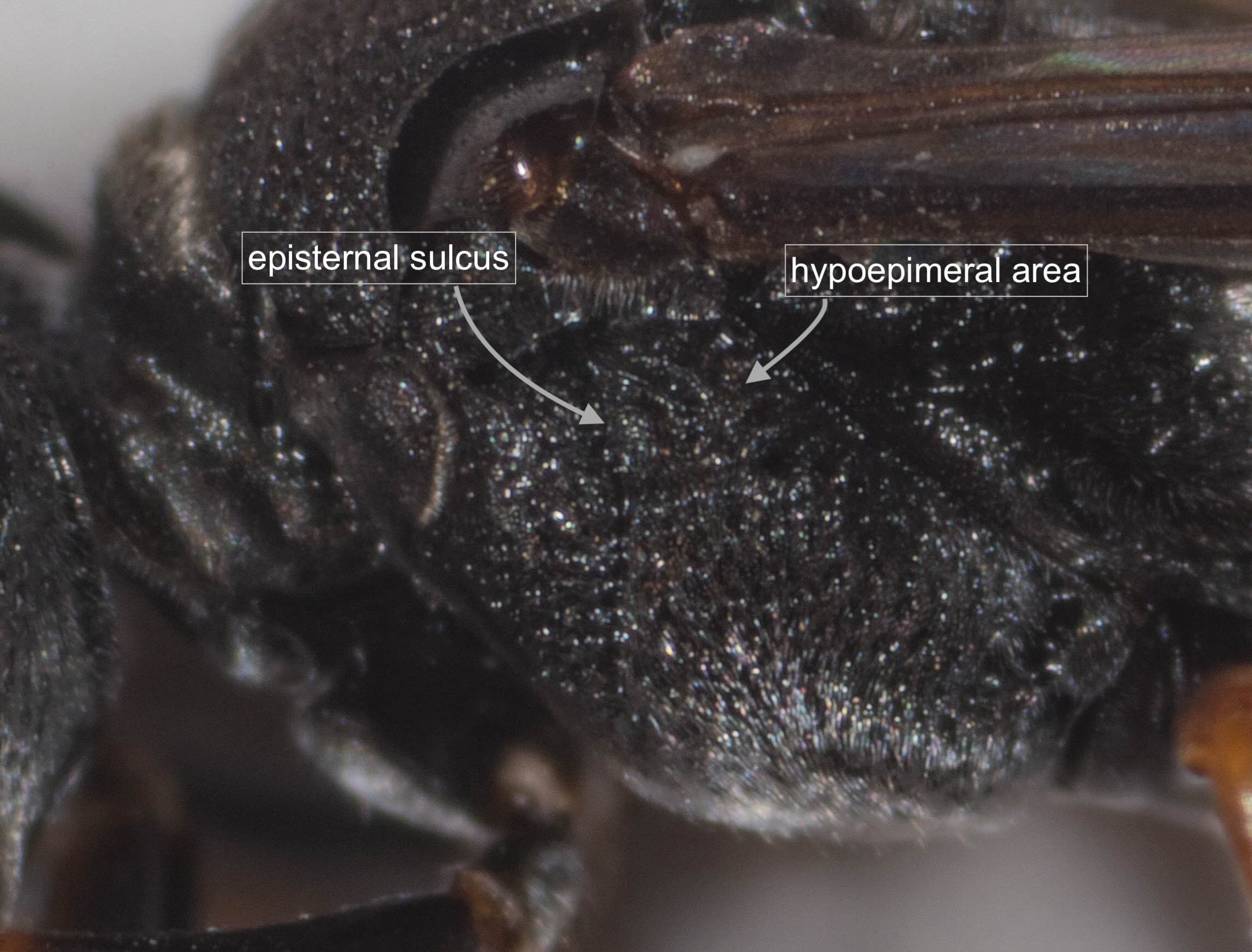
mesopleuron very strongly sculptured
Sphodrotes punctuosa females:
“Anterodorsal mesopleuron very strongly sculptured, punctures pit-like. Episternal sulcus deep. Hypoepimeral area with coarse, reticulo-striate sculpture. Entire mesopleuron with thin greyish-white pubescence.”

gaster black with limited pubescence
Sphodrotes punctuosa females:
“Gaster black, apical tergal margins slightly ferruginously transparent. Pubescence thin, silvery to slightly golden, forming fasciae on tergum I-III.”
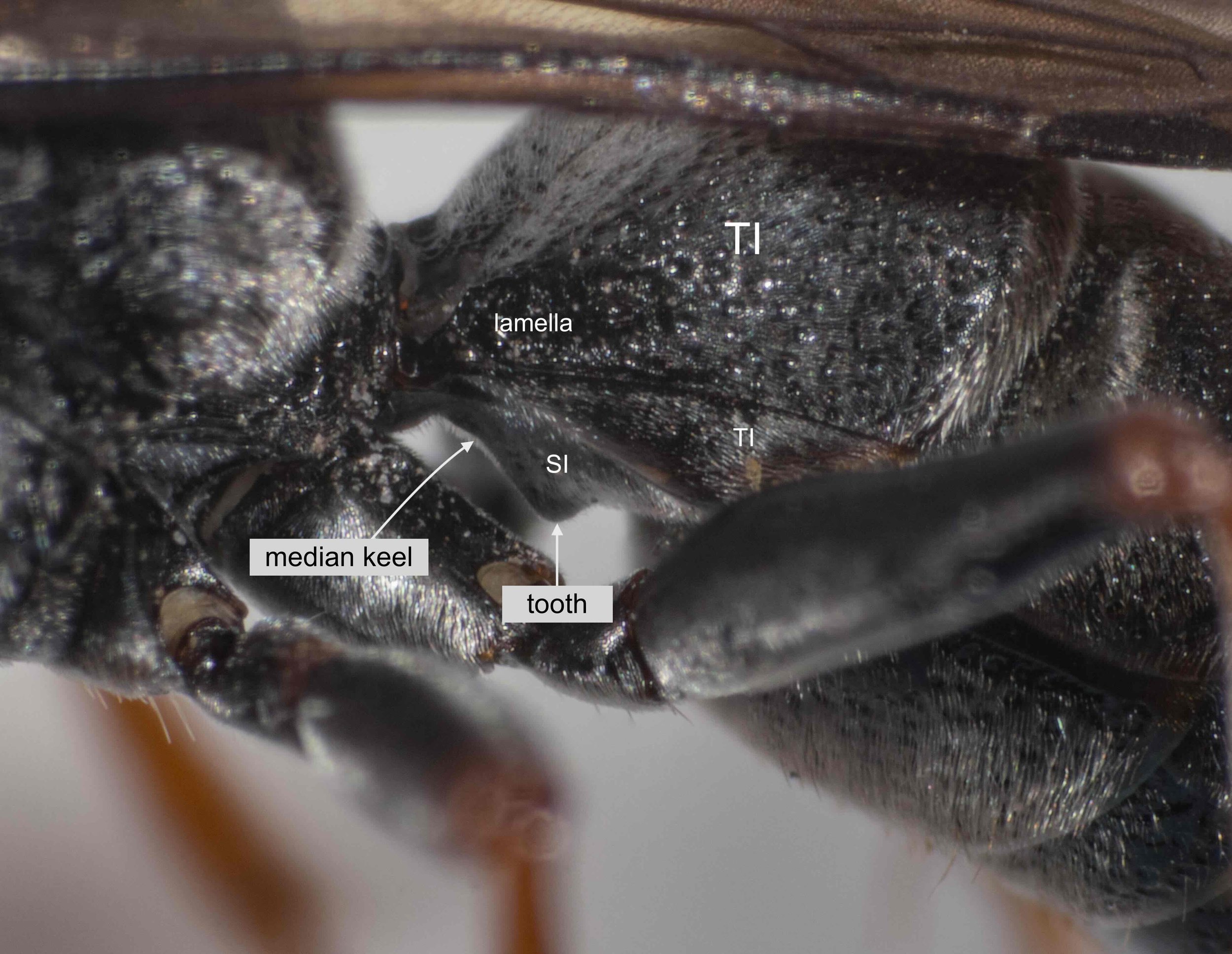
first segment of gaster
Sphodrotes species:
“Tergum 1 with a laterobasal, strongly raised, almost angularly projecting lamella. Sternum 1 (except in prima) with a median vault or carina terminating in a compressed tooth.” p.87
Sphodrotes punctuosa females:
“Sternum I with indistinct median keel, posterior tooth rather weak.”
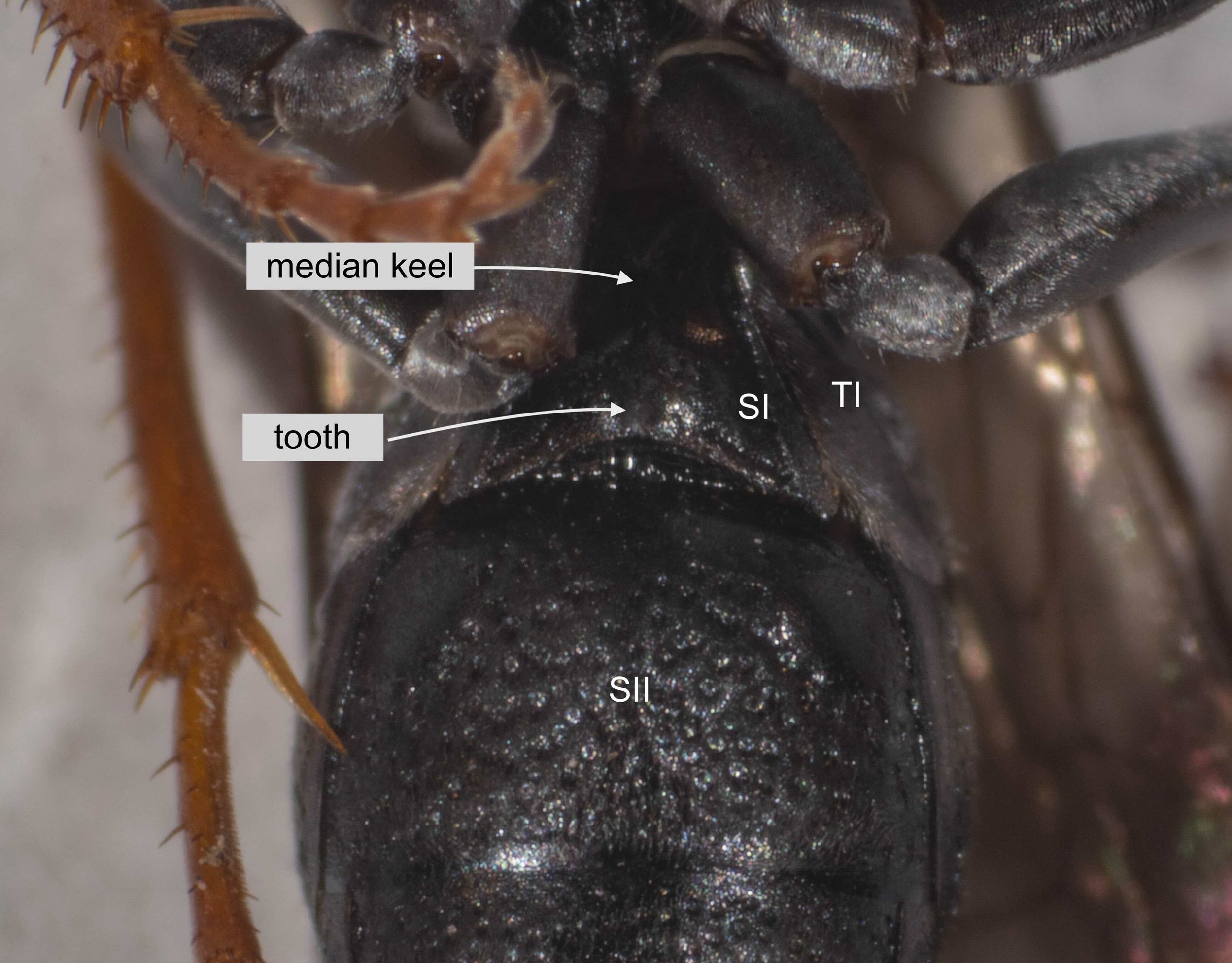
first segment of gaster
Sphodrotes species:
“Sternum 1 (except in prima) with a median vault or carina terminating in a compressed tooth.” p.87
Sphodrotes punctuosa females:
“Sternum I with indistinct median keel, posterior tooth rather weak.”

gaster black with limited pubescence
Sphodrotes punctuosa females:
“Gaster black, apical tergal margins slightly ferruginously transparent. Pubescence thin, silvery to slightly golden, forming fasciae on tergum I-III.”
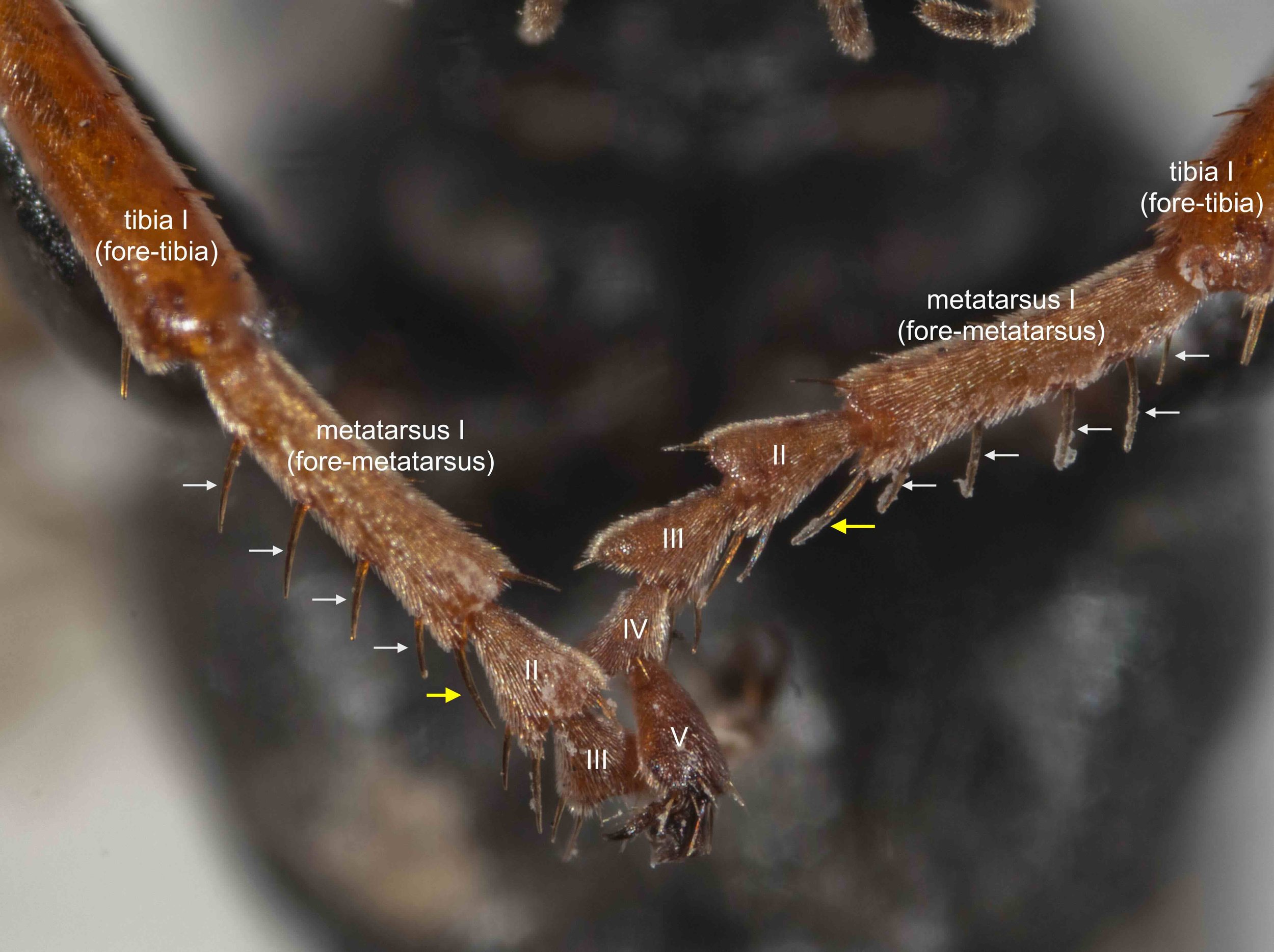
foreleg tarsal rake
Sphodrotes punctuosa females:
“Fore-metatarsus with 5-6 rake spines of which the distal one is distinctly shorter than the second tarsal segment.”
[arrows indicate spines; thicker, yellow arrow is the most distal spine]
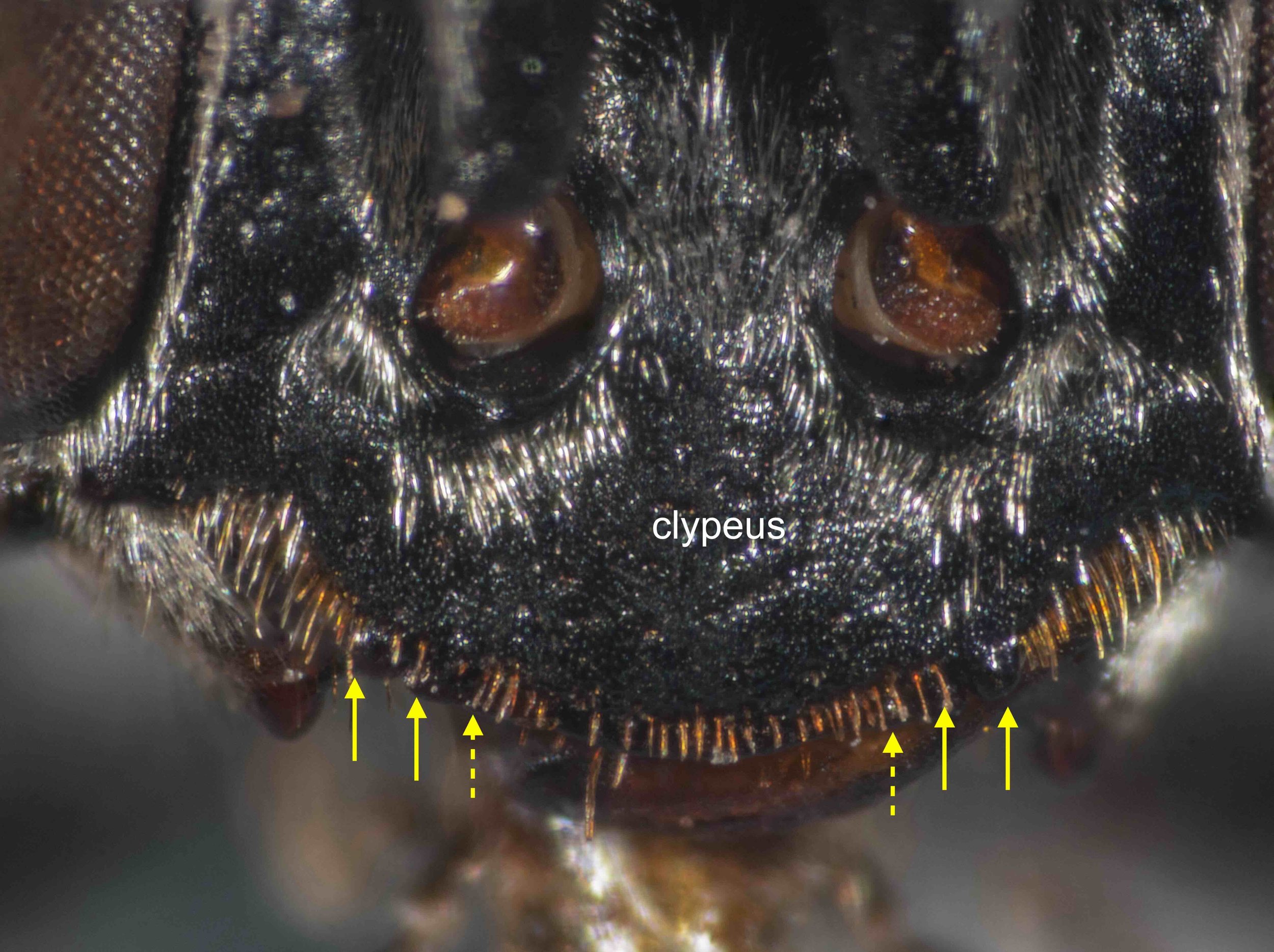
female clypeus (frontal view)
Sphodrotes punctuosa females:
“Clypeal outline (Fig. 31), the three lateral teeth distinct, median emargination very shallow or absent.”
The arrows indicate the lateral teeth, with the innermost (dotted arrow) difficult to see beneath the fringing setae.
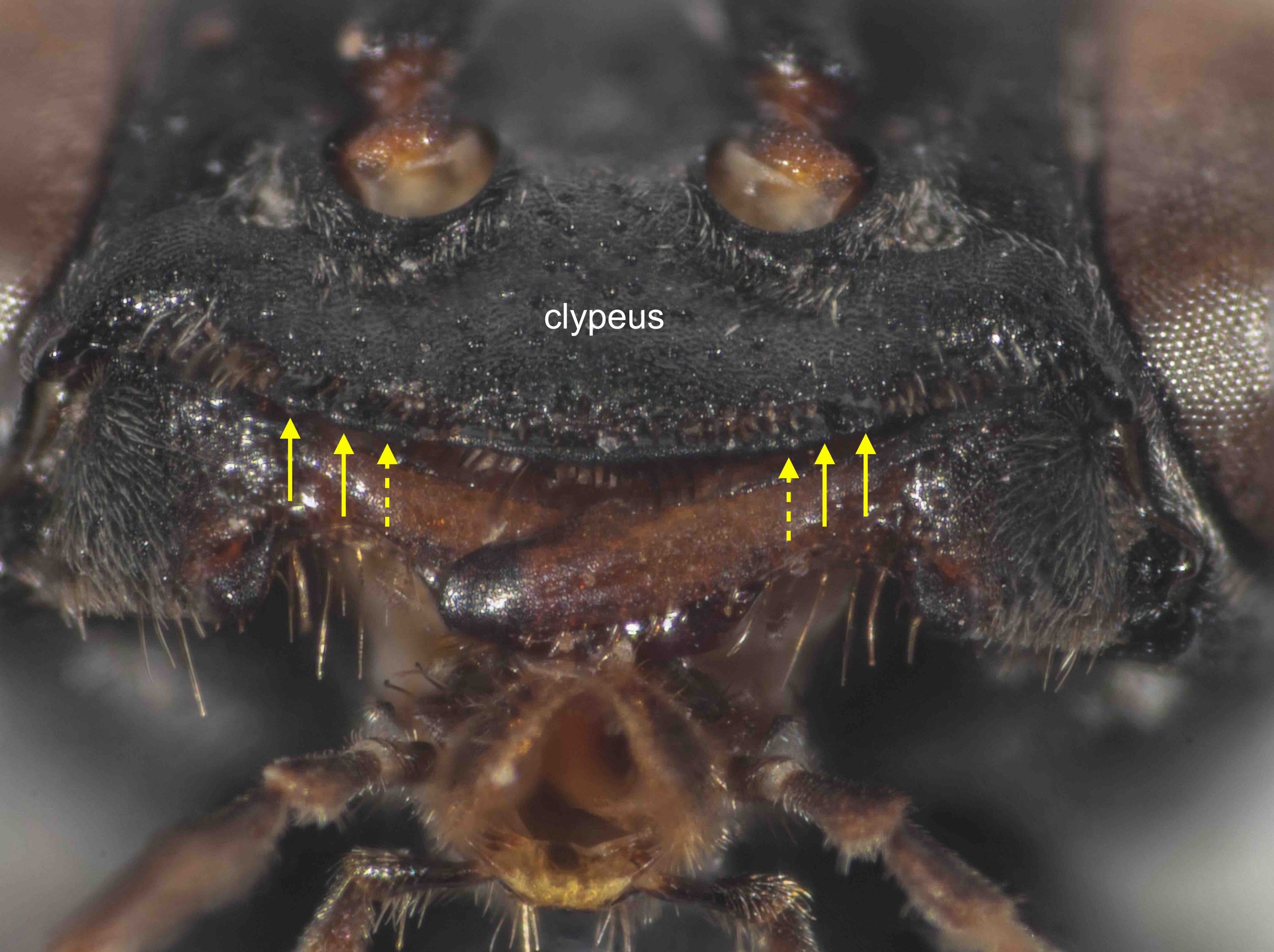
female clypeus (more ventral view)
Sphodrotes punctuosa females:
“Clypeal outline (Fig. 31), the three lateral teeth distinct, median emargination very shallow or absent.”
The arrows indicate the lateral teeth, with the innermost (dotted arrow) difficult to see.

Sphodrotes have:
- inner margins of eyes parallel, or slightly converging below
- a wide scapal basin (most)

Sphodrotes have:
- 3 submarginal cells in the forewing
- the second submarginal cell triangular and petiolate, or at least narrowed anteriorly (arrow)
- broad genae, so the head appears rectangular when viewed dorsally
- integument strongly sculpted, and usually pitted

Occasionally I catch a female outside her burrow, grooming in the sun. Such photo opportunities are, however, quite rare. It’s normally the males that are sitting about on the vegetation.

Inspecting her chosen nest site … sandy soil beneath a layer of loose gravel, fallen leaves and twigs.

Excavation works proceed in relative obscurity. This is in stark contrast to the ‘out in the open’ approach of nest digging among some other crabronids (e.g. Cerceris, Bembix).

If I’m patient and watch a known burrow entrance, I may get a glimpse of the female returning with prey. Typically they dive into the open burrow beneath the leaf litter before I can get a good look … let alone a shot. This was my lucky day, as she landed outside before wrestling her large catch below ground.
Evans (1973) recorded Sphodrotes nemoralis in Far North QLD provisioning their nests with immature bugs (Pentatomoidea … stink bugs, etc). And it seems our local species is targeting similar prey.

Within 4 minutes she headed out again, quickly departing the area. Like many ground-nesting crabronids, Sphodrotes are susceptible to a variety of parasites and nest invaders. Avoiding detection is a priority – although a near impossibility.

























